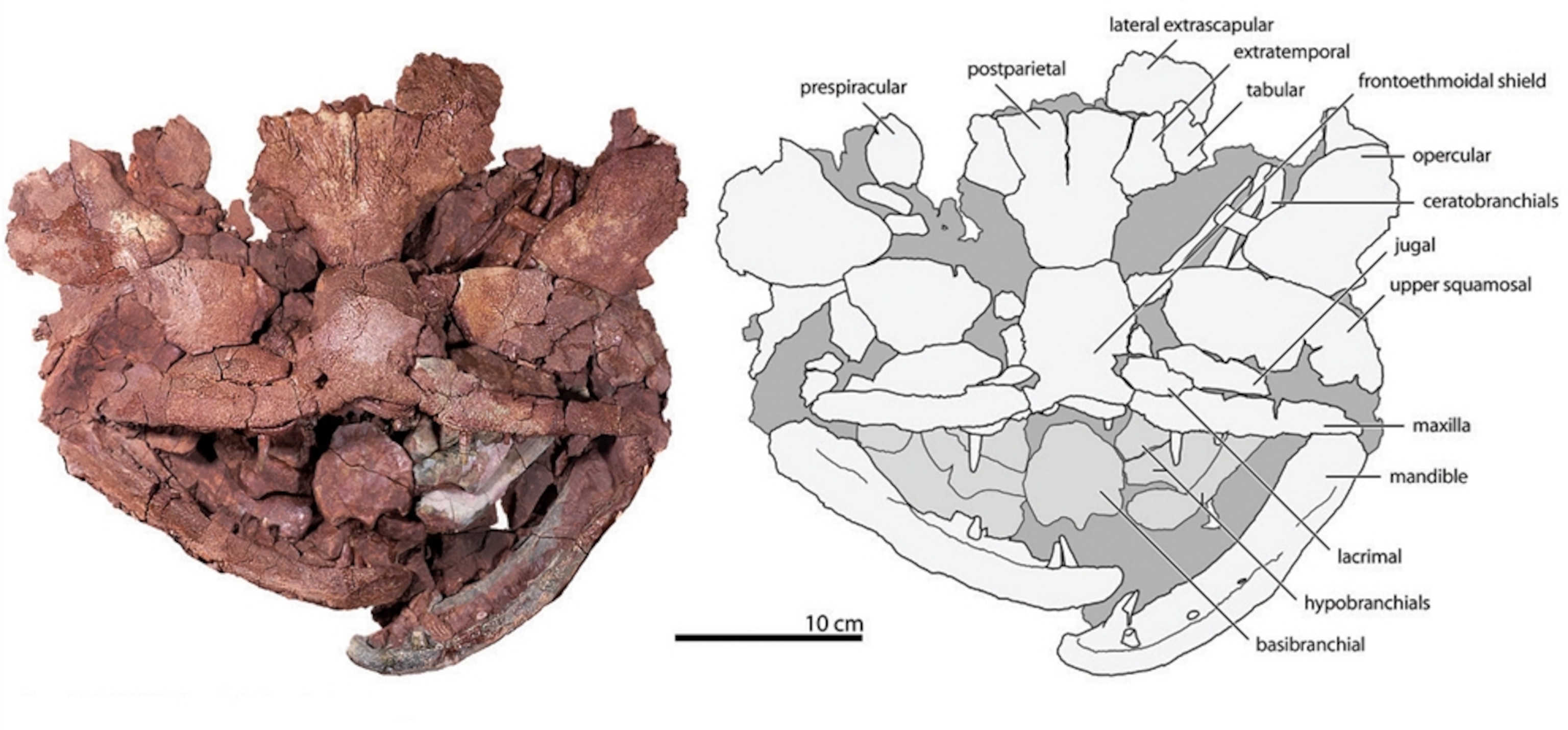
Ancient Toothy Fish Found in Arctic—Giant Prowled Rivers
Six-foot predator had long fangs, "smiling" face.
Fossils of a new species of carnivorous fish that prowled ancient rivers have been discovered in the Canadian Arctic, a new study says.
The 6-foot-long (1.8-meter-long) Laccognathus embryi was "the kind of fish that was waiting to lunge out to grab whatever was in front of it," said study co-author Ted Daeschler, a vertebrate zoologist at the Academy of Natural Sciences in Philadelphia.
The fish's 1.5-inch-long (3.8-centimeter-long) fangs would have definitely sunk into flesh, he added.
In addition, the 375-million-year-old fish had thick, quarter-size scales; tiny eyes; a flat head; and a wide mouth—sort of like a modern-day grouper.
The fossil head "looks like a big, smiling face looking up at you," added Daeschler, who received funding for his research from the National Geographic Society's Committee for Research and Exploration. (The Society owns National Geographic News.)
(See pictures of today's fish giants.)
Newfound Giant Swam With "Missing Link" Fish
Daeschler and colleagues found the new fish fossils during several excavations in a siltstone flood deposit on Ellesmere Island (see map) in Nunavut, Canada. The name L. embryi is a nod to Canadian geologist Ashton Embry, whose Arctic research helped prepare the scientists for their fieldwork.
In 2004 the same "incredibly productive" Arctic site had yielded Tiktaalik roseae, a fossil creature that lived during the same period as L. embryi and is considered to be a crucial link between fish and early limbed animals.
(See "Fossil Fish With 'Limbs' Is Missing Link, Study Says.")
Both Tiktaalik and L. embryi were lobe-finned fish, a group with rounded, limb-like fins. The group was beginning to blink out in the Devonian period, 415 to 360 million years ago—its only surviving members are the "living fossil" fish, the coelacanth, and the lungfish.
The Devonian "was a fish-eats-fish kind of world," Daeschler said. "There was a real arms race going. If you [were a smaller fish and] didn't have good armor on your body, you were very vulnerable."
The period was also "a very watershed time in the history of life on Earth, because you're seeing the dwindling—the end—of many of the more archaic groups ... including many of the lobe-finned fish," Daeschler said.
At the same time, "you're seeing the beginnings of the groups that go on to dominate the vertebrate fauna for the next 375 million years ... the upstarts if you want."
For example, ray-finned fish—the typical body plan we associate with modern fish—had begun to take over the seas.
(Also see "Goliath Tiger Fish: 'Evolution on Steroids' in Congo.")
Devonian World Still a Mystery
Though the Tiktaalik and L. embryi discoveries are valuable in and of themselves, "it's not just finding the animal—it's also placing the animal in its evolutionary crucible," Daeschler added.
For instance, finding the "cast of characters" that once occupied the Arctic site may begin to provide clues about who ate who and may help answer a big question: What environmental conditions drove fish onto land, where they eventually evolved into limbed animals, including us?
"We want to know," Daeschler said, "what that world was like."
The new predatory-fish study was published in September in the Journal of Vertebrate Paleontology.





